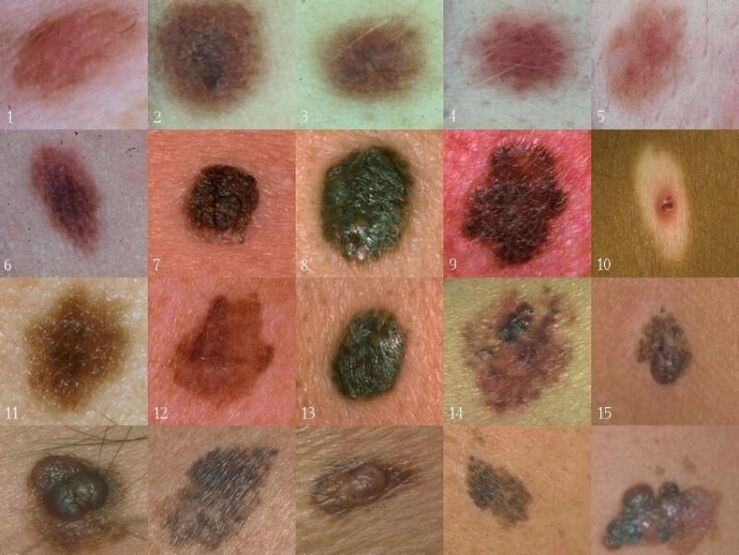
Some types of human papillomavirus, which penetrate damaged areas of the skin, cause rapid growth of cells in its upper layer. As a result, warts form. Types of warts can vary. They form anywhere on the skin and can vary greatly in size and color. Warts usually do not cause significant problems, they go away on their own. Nevertheless, in some cases, it is worth consulting a doctor and removing them.
Types of warts on the body are usually differentiated according to their place of distribution.
Types of warts
- Rude (common)
- Plantar,
- Flat (youthful),
- Genital warts (genital warts)
- Filiform,
- Senile (seborrheic keratomas).
Common warts
Rude or common - this is the most common type of these tumors. These are small nodules (up to 10 mm) with a rough surface. They protrude slightly beyond the surface of the skin and are completely painless. Common warts form anywhere on the body, but most often they are on the neck, head, elbows or knees.
Another feature of common warts is the appearance next to the "primary", large warts, smaller ones.
Plantar
This is one of the varieties of common warts, it is also called "Spitz". It is located on the skin of the foot, usually on the side of the sole. It consists of several papillae, joined to each other, surrounded by a roll. Sometimes Spitz looks like a dense thorn that has grown on the skin. Sometimes plantar warts can grow inside the skin. Then they look like waterfalls surrounded by a coil with protruding papillae. Plantar warts often cause discomfort because they cause discomfort and even pain when walking.
Their formation can cause tight or uncomfortable shoes. In such shoes, areas of the skin are damaged and become more sensitive to the entry and development of human papillomavirus.
Flat
Flat warts are more common at a young age, in children and adolescents, and are therefore called adolescents. These are small formations (usually about 3 mm). They can be round or irregular. The surface of the young is smooth and flat. The color is usually the same as on the skin, sometimes flat warts can have a yellowish tinge. These types of warts can form on any part of the skin, but their "favorite" places are the face and hands.
Flat warts usually do not cause physical discomfort and disappear over time. However, when placed in prominent places, they cause aesthetic inconvenience, so patients often seek medical attention and beauticians to remove them.
Genital warts
Such warts are localized on the genitals and infection occurs during sexual contact. The most common types of genital warts are groin, penis, labia and anus. This type of wart can also form in the mouth.
Genital warts are small skin growths with sharp ends, small papillae. These papillae merge with each other and often look like cauliflower. The color of the genital warts is dark-flesh-color, pink.
Treatment of genital warts is performed by a dermatologist with the participation of a gynecologist or urologist.
Filiform
Filiform warts (accrochords) are more common in the elderly. They are elongated growths that resemble threads. The size of the filamentous wart can be up to 1 cm. The location of the acrochord is the skin on the neck and face. They most often form on the eyelids, lips. There are filamentous warts in the armpits.
Acrochords are often injured due to their elongated shape. By themselves, in most cases, they do not disappear, moreover, after removal, recurrences often occur with the formation of new warts in the same places.
Older
Seborrheic keratomas most often develop in old age due to skin changes. They are located on the body anywhere, but more often on the neck, on the arms, on the chest. These are small flat papules with clear boundaries. Senile warts are more often yellow-pink or brown in color, their size is up to 2 cm. They can be isolated and can form whole sulfur. Dead skin cells are the basis of such tumors. At first they are soft, but over time they become dense, covered with cracks.
Senile warts require careful attention, as they are prone to malignant transformation.
So, there are different types of warts. Most of them are harmless, but it is better, without delay, to consult a doctor and find out.














































































